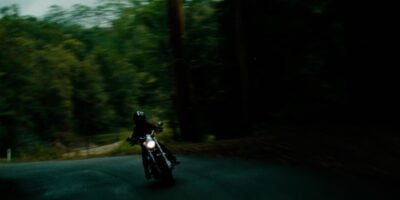Sometimes in life, you just let things pass you by. For me, Happy Gilmore was one of those things. It’s been over 20 years since the slapstick comedy’s initial release, and the SNL actor Adam Sandler has since become the punchline of jokes about people who should perhaps quit their day jobs. Unfortunately, the joke rings true: my exposure to Sandler films have continually been a huge let down.
However, for Generation X and Y, Sandler was arguably one of the funniest comedians the ’90s had to offer. The financial success of Billy Madison and Happy Gilmore (of which provided the name for his production company Happy Madison Productions) gave Sander a reputation that allowed him to pen as many flops as he liked. But despite Sandler’s bad rep, when I finally got round to watching Happy Gilmore recently, I was pleasantly surprised at how well it’s aged.
Happy Gilmore follows Sandler as the eponymous failed ice hockey player turned golfer (who Sandler based on a friend). I’ll try not to spoil the plot, but even if you haven’t seen it, it’s pretty obvious where it’s going from the first half-hour or so. And, for the record, you should watch it, even in 2018.
What allows the film to hold onto its timeliness is the antagonist, Shooter McGavin.
Having no idea of its plot besides the iconic hockey slap-shot technique that Gilmore brings to the golf course (a move that serves the obnoxious, infantile, yet generous character extremely well), I found myself laughing a lot more than expected.
Indeed, what allows the film to hold onto its timeliness is the antagonist, Shooter McGavin (Christopher McDonald). Without a completely hateable character to bounce off, a lot of the magic in the movie would have been lost. Contrast Happy Gilmore to Sandler’s more recent flops and it becomes clear that what his later work lacks is a reason to care. Take the case of Jack And Jill, a film lacking in drama, conflict, and even resolution: why would anyone be interested in watching Sandler crudely dress up like a woman, let alone watch him go through a whole sad comedy routine for some two interminable hours?
Bob Barker insisted he perform his own stunts.
Julie Bowen (now know for her role as Claire Dunphy in Modern Family) plays Virginia Venit, Gilmore’s love interest and the tournament’s public relations manager. She deems Gilmore “a publicist’s dream”, a beacon of light in an otherwise stuffy and pompous sport. Amusingly, Happy Gilmore also features a cameo from The Price Is Right’s Bob Barker, who plays himself in an award-winning Gilmore and Barker fight scene. Barker insisted he perform his own stunts, having trained in Tang Soo Do karate for decades under Chuck Norris (you can’t make this shit up), a nod to Sandler and co-writer Tim Herlihy’s fine-tuned skill for writing in-jokes.
In many ways, it feels like Sandler has been chasing a film like this ever since it came out, and perhaps he’s yet to grow up since co-writing Happy Gilmore – just read up on his film That’s My Boy and you’ll get the gist of what he’s spent the last little while doing. Sandler has a knack for portraying characters who have frequent violent outbursts: his best role could be Paul Thomas Anderson’s 2002 Punch-Drunk Love, and perhaps worst is Anger Management.
As Harvey Dent once muttered in The Dark Knight: “you either die, or live long enough to see yourself become the villain.” Not sure he was thinking about Adam Sandler, but it’s unfortunately quite relevant here when you consider his later body of work. For anyone that’s looking to improve their golf game, maybe stay away from this film. Speaking from experience, trying Gilmore’s signature shot on the actual golf course can lead to severe embarrassment. And for those who, like me, haven’t seen Happy Gilmore before, start your 2018 right.
You can stream Happy Gilmore now on Netflix Australia. To read a BRAG retrospective on the J.J. Abrams series Fringe, click here.


































